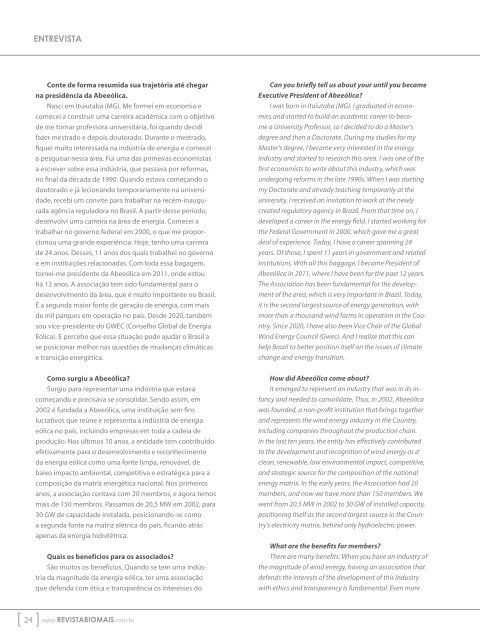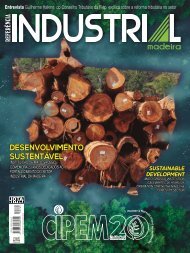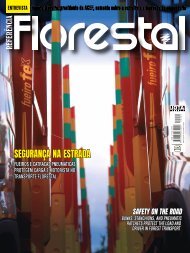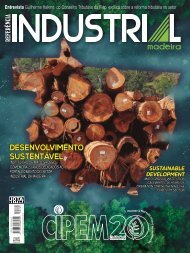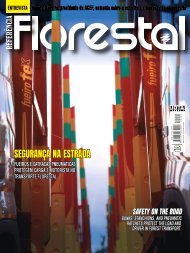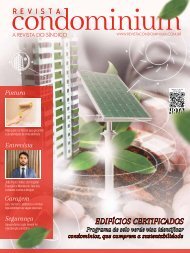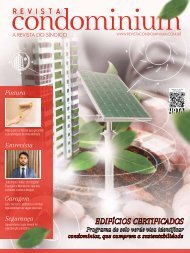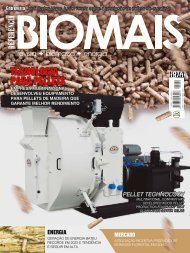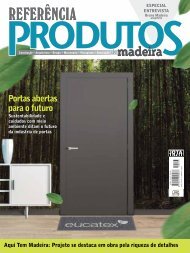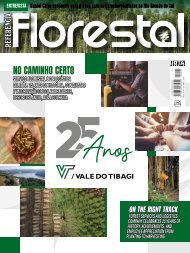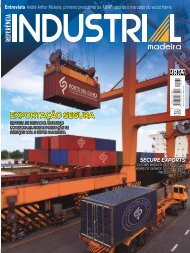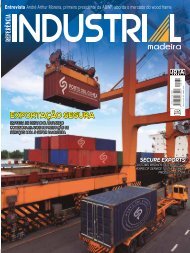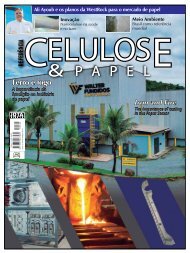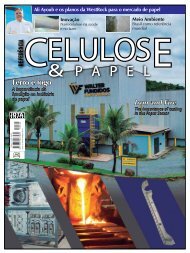Create successful ePaper yourself
Turn your PDF publications into a flip-book with our unique Google optimized e-Paper software.
ENTREVISTA<br />
Conte de forma resumida sua trajetória até chegar<br />
na presidência da Abeeólica.<br />
Nasci em Ituiutaba (MG). Me formei em economia e<br />
comecei a construir uma carreira acadêmica com o objetivo<br />
de me tornar professora universitária, foi quando decidi<br />
fazer mestrado e depois doutorado. Durante o mestrado,<br />
fiquei muito interessada na indústria de energia e comecei<br />
a pesquisar nessa área. Fui uma das primeiras economistas<br />
a escrever sobre essa indústria, que passava por reformas,<br />
no final da década de 1990. Quando estava começando o<br />
doutorado e já lecionando temporariamente na universidade,<br />
recebi um convite para trabalhar na recém-inaugurada<br />
agência reguladora no Brasil. A partir desse período,<br />
desenvolvi uma carreira na área de energia. Comecei a<br />
trabalhar no governo federal em 2000, o que me proporcionou<br />
uma grande experiência. Hoje, tenho uma carreira<br />
de 24 anos. Desses, 11 anos dos quais trabalhei no governo<br />
e em instituições relacionadas. Com toda essa bagagem,<br />
tornei-me presidente da Abeeólica em 2011, onde estou<br />
há 12 anos. A associação tem sido fundamental para o<br />
desenvolvimento da área, que é muito importante no Brasil.<br />
É a segunda maior fonte de geração de energia, com mais<br />
de mil parques em operação no país. Desde 2020, também<br />
sou vice-presidente do GWEC (Conselho Global de Energia<br />
Eólica). E percebo que essa situação pode ajudar o Brasil a<br />
se posicionar melhor nas questões de mudanças climáticas<br />
e transição energética.<br />
Como surgiu a Abeeólica?<br />
Surgiu para representar uma indústria que estava<br />
começando e precisava se consolidar. Sendo assim, em<br />
2002 é fundada a Abeeólica, uma instituição sem fins<br />
lucrativos que reúne e representa a indústria de energia<br />
eólica no país, incluindo empresas em toda a cadeia de<br />
produção. Nos últimos 10 anos, a entidade tem contribuído<br />
efetivamente para o desenvolvimento e reconhecimento<br />
da energia eólica como uma fonte limpa, renovável, de<br />
baixo impacto ambiental, competitiva e estratégica para a<br />
composição da matriz energética nacional. Nos primeiros<br />
anos, a associação contava com 20 membros, e agora temos<br />
mais de 150 membros. Passamos de 20,5 MW em 2002, para<br />
30 GW de capacidade instalada, posicionando-se como<br />
a segunda fonte na matriz elétrica do país, ficando atrás<br />
apenas da energia hidrelétrica.<br />
Quais os benefícios para os associados?<br />
São muitos os benefícios. Quando se tem uma indústria<br />
da magnitude da energia eólica, ter uma associação<br />
que defenda com ética e transparência os interesses do<br />
Can you briefly tell us about your until you became<br />
Executive President of Abeeólica?<br />
I was born in Ituiutaba (MG). I graduated in economics<br />
and started to build an academic career to become<br />
a University Professor, so I decided to do a Master’s<br />
degree and then a Doctorate. During my studies for my<br />
Master’s degree, I became very interested in the energy<br />
industry and started to research this area. I was one of the<br />
first economists to write about this industry, which was<br />
undergoing reforms in the late 1990s. When I was starting<br />
my Doctorate and already teaching temporarily at the<br />
university, I received an invitation to work at the newly<br />
created regulatory agency in Brazil. From that time on, I<br />
developed a career in the energy field. I started working for<br />
the Federal Government in 2000, which gave me a great<br />
deal of experience. Today, I have a career spanning 24<br />
years. Of those, I spent 11 years in government and related<br />
institutions. With all this baggage, I became President of<br />
Abeeólica in 2011, where I have been for the past 12 years.<br />
The Association has been fundamental for the development<br />
of the area, which is very important in Brazil. Today,<br />
it is the second largest source of energy generation, with<br />
more than a thousand wind farms in operation in the Country.<br />
Since 2020, I have also been Vice Chair of the Global<br />
Wind Energy Council (Gwec). And I realize that this can<br />
help Brazil to better position itself on the issues of climate<br />
change and energy transition.<br />
How did Abeeólica come about?<br />
It emerged to represent an industry that was in its infancy<br />
and needed to consolidate. Thus, in 2002, Abeeólica<br />
was founded, a non-profit institution that brings together<br />
and represents the wind energy industry in the Country,<br />
including companies throughout the production chain.<br />
In the last ten years, the entity has effectively contributed<br />
to the development and recognition of wind energy as a<br />
clean, renewable, low environmental impact, competitive,<br />
and strategic source for the composition of the national<br />
energy matrix. In the early years, the Association had 20<br />
members, and now we have more than 150 members. We<br />
went from 20.5 MW in 2002 to 30 GW of installed capacity,<br />
positioning itself as the second largest source in the Country’s<br />
electricity matrix, behind only hydroelectric power.<br />
What are the benefits for members?<br />
There are many benefits. When you have an industry of<br />
the magnitude of wind energy, having an association that<br />
defends the interests of the development of this industry<br />
with ethics and transparency is fundamental. Even more<br />
24 www.REVISTABIOMAIS.com.br


